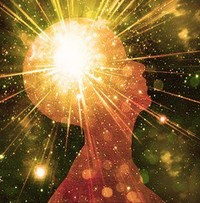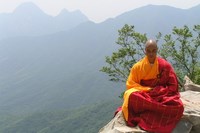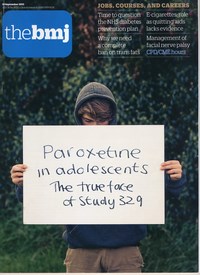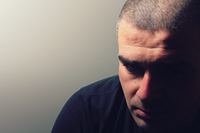I have an interesting dynamic at play at my two chiropractic offices, which illustrates a principle I see in the world at large and is especially relevant now. At one location, my clientele frequently changes appointments; sometimes they do not show up (no-show), and some will drop off, even when they have their chiropractic care covered by insurance (zero out-of-pocket expenses). Their energy, in this regard, seems chaotic. On the other hand, the clientele at my second office rarely misses appointments, contacts me to reschedule if they do, and pay out-of-pocket, no questions asked. Their energy seems ordered.
Because of these differences, I also treat them differently regarding my energy. For instance, with the first group, I have to manage their ever-fluctuating schedules, so I spend most mornings at that office shuffling things around. “Hey, can you come at this time? Would you mind switching…,” and so on. I have to talk with them sometimes about my office scheduling and my time, particularly with the ones who simply fail to show at all. Frankly, I have had to dump some clients in the past because they just could not comply with a set schedule. All good. My office was not for them. I respect that.
My other group does not have those challenges, and I can spend more time on their physical (mental/emotional/spiritual) issues instead of their schedules (or idiosyncrasies for some). If one misses a visit – it does happen – then I know they will contact me shortly and reschedule. The administrative part of that practice essentially runs itself. And, as I have said, I spend the bulk of my time treating them, helping them, talking with them, and providing them with nutritional advice and supplements, etc.
 It is almost as if I am expressing two different types of energy with each group – father and mother energy, or what the Yogic philosophy calls Shiva-Shakti energy and Far Eastern philosophies call the yin-yang. These energies revolve around the feminine-masculine principle to which all individuals and collectives are subject. With my chaotic group, I must express – and adhere to – masculine father energy. While to the more ordered group, I am able to express a more feminine mother energy. Neither is right nor wrong; they are simply what is required to manage the opposite energies of the groups.
It is almost as if I am expressing two different types of energy with each group – father and mother energy, or what the Yogic philosophy calls Shiva-Shakti energy and Far Eastern philosophies call the yin-yang. These energies revolve around the feminine-masculine principle to which all individuals and collectives are subject. With my chaotic group, I must express – and adhere to – masculine father energy. While to the more ordered group, I am able to express a more feminine mother energy. Neither is right nor wrong; they are simply what is required to manage the opposite energies of the groups.
Before I discuss father-mother energy in detail, let me point out that masculine and feminine energy pervades the universe. This does not mean man and woman—a point I feel compelled to make when speaking on the subject. Men and women both express varying degrees of masculine and feminine energy, and each person has a unique makeup of energies. You can take a fun test here to see your masculine-feminine makeup. This one is also good, although you might, like me, get different results (so take them with a grain of salt).
Father-Mother Energy
What I mean about father-mother energy is that they are the embodiments of masculine and feminine energies. The masculine principle refers to elements like structure, boundaries, discipline, logic, action, and protection. It’s about offering support, setting limits, and guiding towards growth. Masculine energy is providing, protecting, doing, achieving, and creating. Masculine energy pushes, takes risks, sets goals, and strives for progress. This is the energy of the hunter, builder, and leader. It is the energy of the father.
The feminine principle refers to elements like nurturing, compassion, receptivity, creativity, intuition, and emotional expression. It’s about unconditional love, caring about and caring for others, and the ability to create/hold space for others. Feminine energy is being, feeling, and connecting. It is flowing, intuitive, and creative. Feminine energy is about nurturing, empathizing, and fostering harmonious relationships. This is the energy of the healer, caretaker, and artist. It is the energy of the mother.
Shiva-Shakti Energy
In yogic philosophy, Shiva and Shakti energy refer to the deities who represent the creative energy of the universe—the Divine Father and Mother. They are the cosmic forces that create, sustain, and dissolve the universe. They are the Divine Principle of Creation, the masculine and feminine necessary for all creation.
Shiva represents pure consciousness, the unchanging, eternal, and transcendent aspect of reality, what we might call The Absolute. He is the silent witness, the observer, the ground of all being. He is the Divine Father; his qualities are stillness, awareness, detachment, transcendence, and timelessness. He is the meditation principle, symbolized by a yogi in deep meditation, with a third eye representing wisdom and intuition. He holds a trident, symbolizing the three gunas (qualities of nature), and a damaru (drum), representing creation and dissolution.
Shakti represents dynamic energy that animates the universe. She is the creative force, the power of manifestation, the source of all movement and change, what we might call Karma (action). She is the Divine Mother; her qualities are dynamism, creativity, power, movement, manifestation, and change. She is the manifestation principle, symbolized by a beautiful goddess, full of life and energy. She is associated with the elements, the senses, and the life force (prana).
Yin-Yang
 In Far Eastern philosophies, the taijitu, the yin-yang symbol, represents masculine-feminine energy. Yin-yang is the polarity that describes the order of the universe—the balanced duality of opposites. In Chinese philosophy, it represents universal principles of dark versus bright, negative versus positive, and growth versus waning, among others, but especially feminine versus masculine.
In Far Eastern philosophies, the taijitu, the yin-yang symbol, represents masculine-feminine energy. Yin-yang is the polarity that describes the order of the universe—the balanced duality of opposites. In Chinese philosophy, it represents universal principles of dark versus bright, negative versus positive, and growth versus waning, among others, but especially feminine versus masculine.
The yin is the feminine principle and represents the female sex, darkness, coldness, and negative pole (like an electrical outlet). The yang represents the male principle, or the male sex, light, hot, and positive pole (like the prongs of an electrical plug). They must be thought of in terms of complementarity—that is, they do not exist independently or in opposition. Instead, they are forces that interact to form a dynamic system in which the whole is greater than the individual parts.
According to Chinese philosophy, everything has both yin and yang properties (for instance, light has no meaning without dark; hot has no meaning without cold). Either of these two elements may express more strongly in a particular object, depending on the perspective through which they are observed. The taijitu shows the balance between the opposite poles (black and white) with a portion of the opposite element in each.
Modern Societal Expression of Father-Mother Energy
When observing modern society, you can see the principles of the masculine-feminine energy at play in many issues. Take, for instance, our most recent American federal elections (state and local, too). It appeared to the discerning observer that a certain level of chaos had impregnated the American societal landscape. Crime appeared up, inflation up, illegal border crossings up, spending on foreign wars up, and more. And it seemed that there had been a long-standing push to prioritize the rights of small minority communities (e.g., trans, criminals, etc.) over the rights of the majority. You could almost hear the mother energy saying, “Now, be nice. Give your toys to…” whomever. This is not wrong or bad energy by any means. It was nurturing, compassionate, receptive, and predominantly emotional.
 However, in the chaos, most of the public suffered through higher costs of living, danger to person and property, loss of work opportunities, and the real threat of future sons (and now daughters) fighting in foreign wars. The majority were not in favor of this trajectory. As a result, they overwhelmingly elected men and women who represent a strong father energy—order, boundaries, structure, and protection. It seems almost natural to restore balance to an otherwise disequilibrated society.
However, in the chaos, most of the public suffered through higher costs of living, danger to person and property, loss of work opportunities, and the real threat of future sons (and now daughters) fighting in foreign wars. The majority were not in favor of this trajectory. As a result, they overwhelmingly elected men and women who represent a strong father energy—order, boundaries, structure, and protection. It seems almost natural to restore balance to an otherwise disequilibrated society.
Now, many people reading this are likely rubbed the wrong way by what I point out, particularly if they were vying for even more mother energy. However, there is a natural equilibrium, as understood by both the yogic and far eastern philosophies. The yin and yang exist together. So, while wanting to care for others, nurture them, and provide for them is entirely viable, this desire cannot run away with itself unopposed. That would violate the interdependent principle of masculine-feminine energy.
It seems almost poetic that the public majority ushered in the father energy. The time was right, and cooler heads prevailed. The opposite is also true. If a society becomes too rigid, too authoritarian, and too restrictive, the majority will most naturally inject powerful mother energy to counter it. This is precisely what happened in the early 1990s when cultural freedom seemed to be at stake.
The father-mother energy of the universe is always in play. It is a universal trait that affects humans, communities, organizations, and nature. The ancients were aware of this energetic interplay, and today, wise individuals seek to find it intertwined with their daily life experiences.
You can choose to observe and marvel at nature’s equilibrating forces, as I do with my two chiropractic offices. Or you can feel assured that the pendulum will swing back in the opposite direction if (and often when) things again become off-balance. Whichever way you look, you will not be able to unsee the pervasion of masculine-feminine energy throughout the universe and in human affairs.



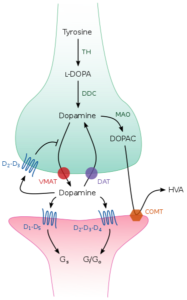
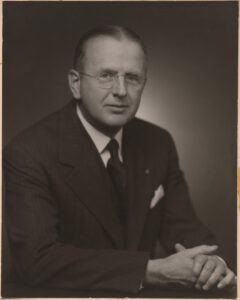
















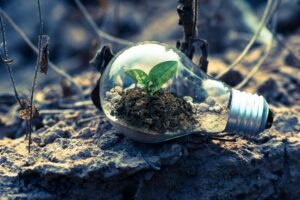




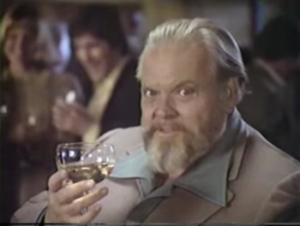









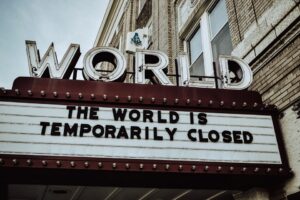










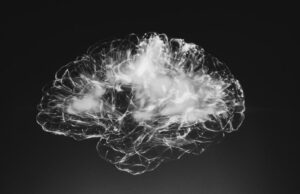






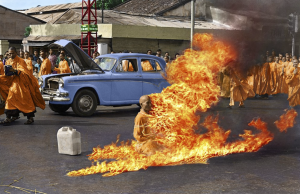


 More importantly, they happen without our taking notice. We do not have to think about our every action. We do not have to initiate every move, only the decision, and sometimes not even that. By freeing our mind of these routine actions, we are able to concentrate more on complex actions and behaviors, we are able to think about abstract ideas, and we are able to self-reflect (as far as we know, the only species that does this). Complex thinking has led to the creation of musical masterpieces, mathematical theories, and technological innovations. It has inspired timeless art, revolutionary science and allowed us to ask and ponder the great philosophical questions of life, those that give our lives meaning. Without an automation of our primary thought system, it is questionable whether we’d have ever accomplished anything more than our most basic survival. Automation of thought is the first and foremost system used by the brain on a regular basis. More than ninety percent of our day is made up of habitual actions. According to Daniel Kahneman, Nobel Prize winning psychologist and economist, ninety-eight percent of our mental processes are of the automatic, effortless, and unconscious kind, even though we tend to believe we are making rational decisions throughout the day. Most people are thus walking through life effortlessly unaware, allowing their automatic thoughts to flow in and out of consciousness, and create a stream of time which ultimately frames their experiences. I like to call this unconscious consciousness – consciously awake, just not aware.
More importantly, they happen without our taking notice. We do not have to think about our every action. We do not have to initiate every move, only the decision, and sometimes not even that. By freeing our mind of these routine actions, we are able to concentrate more on complex actions and behaviors, we are able to think about abstract ideas, and we are able to self-reflect (as far as we know, the only species that does this). Complex thinking has led to the creation of musical masterpieces, mathematical theories, and technological innovations. It has inspired timeless art, revolutionary science and allowed us to ask and ponder the great philosophical questions of life, those that give our lives meaning. Without an automation of our primary thought system, it is questionable whether we’d have ever accomplished anything more than our most basic survival. Automation of thought is the first and foremost system used by the brain on a regular basis. More than ninety percent of our day is made up of habitual actions. According to Daniel Kahneman, Nobel Prize winning psychologist and economist, ninety-eight percent of our mental processes are of the automatic, effortless, and unconscious kind, even though we tend to believe we are making rational decisions throughout the day. Most people are thus walking through life effortlessly unaware, allowing their automatic thoughts to flow in and out of consciousness, and create a stream of time which ultimately frames their experiences. I like to call this unconscious consciousness – consciously awake, just not aware. While many people turn to drugs and alcohol in a futile attempt to quiet the mind-chatter, these mind-alterers actually make matters worse over time. The only way to diminish mind-chatter is to pull the mind into attention. That’s why sports and exercise have been popular since antiquity. By focusing on a physical activity, the mind is forced into what Kahneman calls system 2 thinking, or one which is done with our conscious mind – conscious consciousness – effortful, intentional, and controlled. Making art and music are also amazing mind-chatter reducers. So is doing math, or thinking about anything in detail, like when you strategize or follow a protocol. Anything which forces the mind to focus reduces mind chatter (one reason smart phones have become addictive). However, even these activities, when done repeatedly can become automatic. Without a doubt, people strive to make automatic as many of their activities as possible. We call this mastery. And mastery makes what was once effortful a habituation. As a result, once we master an activity, it does have the potentiality to become an automatic process.
While many people turn to drugs and alcohol in a futile attempt to quiet the mind-chatter, these mind-alterers actually make matters worse over time. The only way to diminish mind-chatter is to pull the mind into attention. That’s why sports and exercise have been popular since antiquity. By focusing on a physical activity, the mind is forced into what Kahneman calls system 2 thinking, or one which is done with our conscious mind – conscious consciousness – effortful, intentional, and controlled. Making art and music are also amazing mind-chatter reducers. So is doing math, or thinking about anything in detail, like when you strategize or follow a protocol. Anything which forces the mind to focus reduces mind chatter (one reason smart phones have become addictive). However, even these activities, when done repeatedly can become automatic. Without a doubt, people strive to make automatic as many of their activities as possible. We call this mastery. And mastery makes what was once effortful a habituation. As a result, once we master an activity, it does have the potentiality to become an automatic process.









